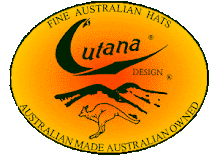Tuesday May 31st The Split Rock Ranch has two bases, the other one sited on the main 287 highway and enigmatically called Split Rock Ranch 'the Block'. As I was rejoining the highway, Miles invited me to call in for the self serve breakfast provided in one of the cattle barns for all the cowboys working on the ranch. So here are Lady and Mo waiting patiently..
...while I tuck into biscuits and gravy washed down with numerous cups of coffee.....This was probably near the site of the Split Rock Pony Express station which lay south of the Sweetwater river. Split Rock was another noted landmark on the emigrant trails, and you can just see the cleft on the horizon to the right of the Split Rock heritage marker below.....
This was on highway 287, another boring plod though I was sometimes able to ride along the wide grassy verge, keeping an eye out for more rattlesnakes.
The Green Mountain Herd Management Area (HMA) lies to the south of the highway here. This is one of several BLM ( Bureau of Land Management) administered areas of public land which sustain a population of wild horses or burros. The Green Mountain HMA encompasses around 88,000 acres with around 300 wild horses or mustangs. This lone horse I saw on land to the south of the highway was probably a mustang colt...
My destination for the day was Jeffrey City, where I found a place to park the horses and camp behind the Split Rock Café, a sort of Wild West greasy spoon with a gloomy bar and friendly staff...
Jeffrey City has a proud boast in its claim to have the biggest bust of them all..
...sadly not belonging to the wild west barmaid at the Split Rock cafe, but resulting from a crash in the uranium market. A sleepy little community with the cosy name of Home on the Range originally existed here. Following the discovery of uranium nearby in 1954 the tiny settlement was given the ambitious name of Jeffrey City, and the population mushroomed to around four thousand by 1980. But after 'the biggest bust of them all' in the early 1980s the town declined rapidly and there are now less than a hundred people living here.
A couple of rather forlorn places of worship survive. The Shepherd's chapel housed in a garage...
...and St Brenden's Catholic church in a shed.
The main excitement of the day Wednesday June 1st as I rode away from Jeffrey City was a plume of dark smoke which appeared behind me...
..eliciting a constant stream of fire engines, police cars and ambulances for the next hour..
..but I never did find out what it was all about, and returned to my monotonous tramp up the highway...
Stopping at Ice Slough, where there was once a Pony Express way station about a mile to the north.
The ice slough was a marshy stream which remained frozen until late summer so ice could be found by digging beneath the surface. The emigrants were able to use this as a welcome source for cooling drinks and preserving meat. This is not possible today due to draining of the slough, or slew as they pronounce it here.
Arriving at Sweetwater crossing,
The Pony Express trail crossed a little further upstream from this point, and then followed the course of the Sweetwater up to South Pass. We would be taking a parallel route slightly further north, but for the moment we needed to find a place to stay for the night. The Mormon Sixth Crossing Handcart visitor centre is located here and the volunteers found a corner of a field for the horses and my tent.
The centre is devoted to commemorating the ordeal of the Willie Handcart company which left Florence only two weeks ahead of the Martin company' They were further west by the time the winter snowstorms struck, but company members were already dying as they struggled to Sixth Crossing. A few miles further west they were met by an advance rescue party, but their torment was not over. As they battled over Rocky Ridge in a fierce blizzard the next day (October 23rd) thirteen more emigrants perished. Survivors of the company reached Salt Lake City on November 9th by which time sixty-eight men, women and children had lost their lives. Altogether the death toll in the handcart disaster was two hundred and thirteen.
...as a popular Mormon pastime is to re-enact the sufferings of their forbears by pulling and pushing handcarts around the country on handcart treks, although it has to be said that the modern experience is considerably more cheerful.































No comments:
Post a Comment